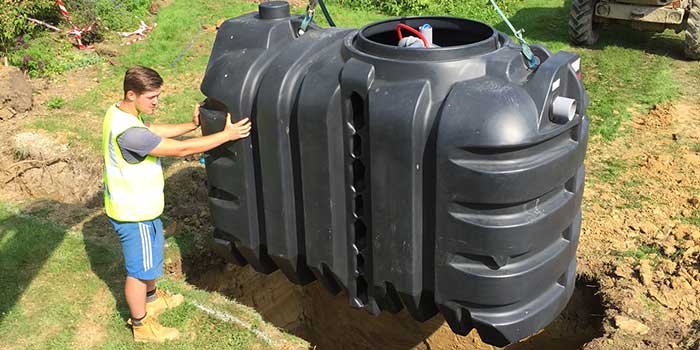With the start of the new year, we thought it was a great time for us to recap on the latest sewage treatment plant regulations, the installation process and the costs to ensure you are up to date ready for the year ahead!
Sewage Treatment Plant Regulations
As we have covered before in our previous blogs, the laws and regulations surrounding sewage treatment plants and septic tanks changed for the better in 2020, taking a much more environmentally-friendly approach.
To summarise, in January of 2020 the Environment Agency changed the legislation. Under these new regulations, if your sewage treatment plant or septic tank disposes waste into surface water (such as wetlands, rivers or streams) this is deemed to be damaging to the surrounding environment. In order to stay compliant, an old septic tank must be replaced with a new sewage treatment plant, which (as the name suggests) treats the waste before expelling it. This means that any waste produced from your sewage treatment plant is much cleaner and therefore less harmful to local wildlife, habitats and greenery.
If your septic tank did dispose into surface water, the plant replacing it must have full and complete BS EN 12566-3 documentation, which signifies that domestic sewage treatment plant meets British standards in regards to quality and effectiveness.
If your current septic tank is still draining untreated waste into local surface water, you could be in breach of the above regulations. If you are unsure, get in touch with our team for help and advice.
How does a sewage treatment plant work?
So we have mentioned that a treatment plant is better for the environment, but how is this so?
Any waste water will first be stored within the primary chamber. This works similarly to a septic tank, as solids and liquids separate. Where a these differ from a septic though, is in the next stage.
Once separation has occurred, the liquid will go on to be treated in the next chamber. This is where bacteria are pumped into the water, which breaks down any waste remaining after separation. In the final section of your plant, known as the humus chamber, the water is now 95% clean and ready to be expelled into your local watercourse.
Installing a sewage treatment plant
If you have chosen to replace your septic tank with a new sewage treatment plant, you may wonder how your new sewage system is installed.
At Proseptic, we know that having your plant installed correctly is of great importance. That is why the first stage of every sewage treatment plant installation is a site survey. When our engineers visit your property, they are able to gather information needed to properly quote for the installation. It also allows us to assess your property, usage of the sewage system and the surrounding areas to ensure that a sewage treatment is indeed the best option. It is also a great opportunity for our clients to ask any questions they may have.
Once initial surveys have been completed, the installation can take place. We plan the sewage system based on the size of the tank needed and the type of drainage required, amongst other factors.
Proseptic engineers will then test the site and ensure that your system is running smoothly. We recommend that once your sewage treatment plant is installed, you keep up with regular maintenance to keep your plant in good condition for years to come.
Sewage treatment plant cost
The cost of a sewage treatment plant will vary from person to person. Factors such as the size of the plant and the installation process this requires will have a large impact. Of course if you only require a small domestic sewage treatment plant or mini sewage treatment plant the cost is going to be lower than larger options.
The ground conditions will also have an impact, with tougher conditions to work with requiring much more precise planning and execution in regards to the installation of the plant. If existing infrastructure is in place, for example from previous sewage systems, there is less need for any additional work to take place.
The best way to get an accurate cost of sewage treatment plants is to contact our team. The friendly engineers at Proseptic are on hand to offer help, advice and of course give accurate and competitive quotes.
